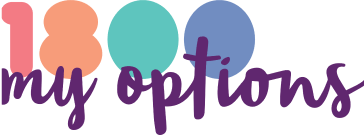Behind the ad: Diversity in the advertising industry
January 2020
One of the first steps to making diverse, inclusive content is making sure there’s diversity and inclusion in the people creating that content.
In a survey of 50 countries, women only made up around 20 percent of advertising creative departments, and Australia is no different.
In a study conducted by The Agency Circle, an Australian non-profit industry committed to increasing diversity within the industry, it was found that 84% of CEO’s, 60% of senior executives and 74% of creative and design professionals in Australian advertising are men.

Limited parental leave, long working hours and a lack of flexibility all present barriers to equality for women who tend to take on the lion’s share of household and caring responsibilities at home. This not only limits opportunities for women entering the industry, but also contributes to a high rate of attrition as women move higher up the ranks.
The industry boys’ club
In a heavily male dominated workforce, another deterrent for women in advertising is a masculine work culture that can lead to macho, hostile or unsafe working environments.
In the same study by The Agency Circle, 45 per cent of women reported feeling vulnerable in the industry because of their gender, compared to 3 per cent of men.

From boardroom to living room
While a diverse workplace isn’t the fix-all for better representation in advertising, research has shown that having a more representative workforce contributes to greater representation in content.
One study exploring why agencies rely on gender stereotypes found that many thought stereotypes were a quick and easy way to communicate to consumers in an ad that might only last a few seconds or be glimpsed on the side of a bus. It also found that many were concerned that non-traditional representations of gender could distract from the product.
But the truth is that stereotypes don’t sell.
While women are half the population, they make 70-80% of all purchasing decisions. Because women often buy for their children, partner, parents, friends and businesses, their purchases have a knock-on effect.
But it’s not just women who want to see a change. More than 83% of consumers want brands they engage with to take a stand on social issues.
The case for a diverse workplace
Moving towards a post-Covid world, where we look towards new hiring opportunities and rebuilding the economy, there has never been a better time to strike a more even gender balance in the advertising industry.
Libby Lyons, the director of the Workplace Gender Equality Agency, spoke to The Guardian about why now is the time for action.
“As we move into the post-Covid recovery phase, we must make sure that women’s workforce participation is not sidelined,” she said. “Our economic recovery depends on women having equal access to secure full-time jobs.”
“Gender equality is not just a human rights issue,” she said. “It is good for business and integral to our economic recovery.”
As we start our planning for the new year, the advertising industry needs to remember that workplace equality benefits us all.









